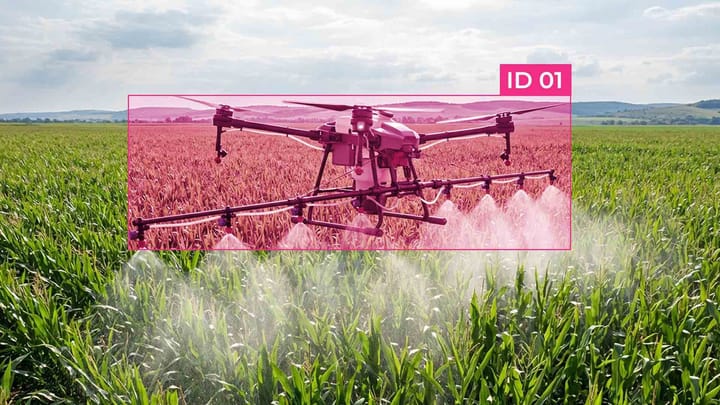Bias Detection and Mitigation in Training Data

Any data collected from systems can reflect historical, social, or technical biases. If these biases remain in the training set, the model can reproduce or even amplify them in predictions, recommendations, or decisions, which can have serious consequences.
Just like historical data, algorithmic decisions or human judgments that enter the training set can contain hidden stereotypes or systemic biases. If not detected and corrected, the model can imperceptibly reproduce these biases in its predictions, resulting in unfair outcomes.
Key Takeaways
- Real-world AI systems directly impact fundamental rights and opportunities.
- Effective solutions require both algorithmic adjustments and diverse data collection.
- Continuous monitoring prevents the reintroduction of bias during model updates.
- Cross-functional teams achieve better fairness outcomes than isolated technical fixes.
Defining Bias and Fairness
Bias is a systematic deviation of the model's output that favors one group or characteristic over another. It can come from the data itself (e.g., underrepresentation of certain groups) or from algorithmic decisions (e.g., choice of metrics or optimization functions).
Fairness is the desire for a model to behave equally or proportionally across different user groups or data categories. There are various approaches to assessing fairness: some test for equal probability of a positive result across groups, others assess equal accuracy or error, and still others assess proportional representation in predictions. The definition of fairness is always contextual and depends on the consequences of the model's decisions for people or systems.
The Impact of Bias on Model Performance and Fairness
When the data reflects historical or structural biases, the model can imperceptibly amplify these biases. For example, in a personnel selection system, an algorithm trained on a company's historical data may underestimate candidates from certain demographic groups. In this case, the model's average accuracy appears high; however, fairness metrics reveal significant differences in results between groups.
Several approaches are employed to mitigate the impact on the model's quality and fairness. The first step is to involve diverse annotators when creating or validating the training set; the diversity of raters helps reduce biases that arise from a homogeneous perspective. The second approach is to utilize adversarial learning, where, during training, special losses or additional models are introduced that are trained to identify and minimize biases in the predictions.
Ethical and Operational Implications
- Loss of user trust. When users perceive that a model's results are biased, it reduces their trust in the system and the organization that uses it. Regular data audits and the use of diverse annotators when validating datasets help increase transparency and trust.
- Legal and regulatory risks. Many countries have laws prohibiting discrimination based on gender, race, or age. Biased models can lead to fines or lawsuits. Using adversarial learning during training helps minimize these risks by reducing systematic bias.
- Reduced efficiency and productivity. Bias in the data can distort the model's decisions, resulting in inefficient resource allocation or missed business opportunities. Monitoring through fairness metrics enables you to identify issues and adjust the model accordingly quickly.
- Ethical dilemmas and liability. Organizations must consider the social implications of automated decisions. Involving diverse annotators and employing transparent bias correction methods enables more objective and moral decision-making.
Bias Detection Mitigation Techniques
The first step in combating bias is to detect it. This can be achieved by analyzing the data and model at various levels. For example, metrics such as demographic parity, equalized odds, or predictive parity show whether the model systematically favors a particular group. It is also essential to analyze the training data for bias: uneven representation of categories, missing values, or heterogeneous annotations can signal potential bias. Once bias is detected, the next step is to reduce it. There are three main approaches:
- Data-level mitigation - modification of the data before training: oversampling of underrepresented groups, undersampling of favored groups, correction or removal of biased examples.
- Algorithm-level mitigation - modification of the training algorithms: application of adversarial learning, where additional models or training losses are trained to detect and minimize bias in the predictions of the main model.
- Post-processing mitigation - correction of model results after training: for example, balancing predictions for different groups based on fairness metrics to ensure equality of results.
Key Fairness Metrics
- Demographic Parity - checks whether the probability of getting a positive result is the same for all groups. For example, if the model accepts 60% of male candidates, it should take approximately the same proportion of female candidates.
- Equalized Odds - assesses whether different groups have the same True Positive Rate and False Positive Rate. This allows you to understand whether the model predicts equally accurately and incorrectly for all categories.
- Predictive Parity - checks whether the probability of a correct prediction is the same for all groups. For example, among those whom the model predicted as successful candidates, the proportion of those who actually succeed should be approximately the same for all groups.
- Calibration within Groups - analyzes whether the predicted probabilities correspond to the actual results within each group.
- Counterfactual Fairness - checks whether the model's prediction will change if only a sensitive feature (such as gender or race) in the data is changed. This helps identify hidden biases.
Pre-processing Strategies for Bias Reduction
One common approach is resampling, where underrepresented groups are increased through oversampling and overrepresented groups are decreased through undersampling. This helps to make the distribution of categories more balanced. Another method is reweighting, where individual examples are assigned weights that compensate for their underrepresentation in the training set.
Data transformation is also used to change or correct features that may implicitly reflect sensitive characteristics, such as gender, race, or age.
Representation Learning Techniques
In the context of bias reduction, the focus is on how a model encodes information about the data to minimize the influence of biases on its predictions. The idea is to train the model to extract neutral, informative features that do not contain an indirect signal of sensitive characteristics.
One common approach is adversarial learning. Here, a separate "adversarial" network attempts to predict a sensitive feature from a latent representation of the data. At the same time, the main model is trained so that these representations do not accurately allow it to identify that feature. As a result, the latent representations become more neutral and less biased, which increases the fairness metrics in the predictions.
Post-processing Methods for Outcome Correction
Post-processing focuses on correcting the model's results after training, when the data and algorithm have already determined its behavior. The idea is to adjust the predictions in a way that makes them fairer for different groups of users, even if the training data contained biases.
One approach is threshold adjustment, where different decision thresholds are set for other groups to equalize the True Positive Rate or False Positive Rate.
Another method is output re-ranking or score calibration, where the predicted probabilities or rankings of outcomes are adjusted based on an analysis of imbalances between groups. For example, in candidate selection systems, the rankings can be changed so that underrepresented groups have an equal chance of a positive outcome.
Learning-based post-processing is also employed, where additional models are trained to correct for systematic biases in the main model's predictions. This combines the principles of adversarial learning and control through fairness metrics, providing more balanced results without changing the basic algorithm.
FAQ
What is bias in machine learning?
Bias in machine learning is a systematic deviation in model predictions that favors certain groups or characteristics over others. It can originate from the training data, algorithms, or feature selection, leading to unfair or skewed outcomes.
Why is fairness essential in AI models?
Fairness ensures that a model's decisions do not discriminate against specific groups and that outcomes are equitable. It protects users from harmful consequences and strengthens trust in AI systems.
What are fairness metrics?
Fairness metrics are quantitative measures used to assess whether a model equitably treats different groups. Examples include demographic parity, equalized odds, and predictive parity.
How do diverse annotators help reduce bias?
Diverse annotators provide varied perspectives during labeling or validation, which helps uncover hidden biases in the dataset. This ensures the training data better reflects real-world diversity.
What is adversarial learning in bias mitigation?
Adversarial learning involves training a model alongside a secondary network that tries to predict sensitive attributes from latent representations. The main model learns to remove bias from these representations to improve fairness.
What are common pre-processing strategies for bias reduction?
Pre-processing strategies include resampling (oversampling or undersampling), reweighting samples, and transforming features to reduce indirect correlation with sensitive attributes. These adjustments make the dataset more balanced before training.
How does post-processing correct model outcomes?
Post-processing modifies the model's predictions after training, such as adjusting decision thresholds or re-ranking scores for different groups. This helps achieve fairness without retraining the model.
Why is representation learning useful for fairness?
Representation learning can produce latent features that minimize the influence of sensitive attributes. Techniques such as adversarial learning and disentangled representations ensure that predictions rely on informative, unbiased features.
What are the ethical and operational implications of bias?
Bias can lead to discrimination, loss of user trust, legal risks, and operational inefficiency. Using fairness metrics and techniques, such as diverse annotators or adversarial learning, helps mitigate these risks while maintaining model effectiveness.



Comments ()